Improving Student Retention Rates for Transfer Students
Duration: 3 Months
Team Members: Sarah Carleton, Erin Aquilino, Kendall Bossert, and Jason Pham
My Role: In this project, I worked as a facilitator and prioritizer during group discussions and designed various parts of the project. I styled the stakeholder maps, created two scenarios that depict why the service is necessary and what it does, created prototypes and merchandise mockups, and contributed to our group’s research.
Problem: The issue that my group explored was low retention rates at Chico State, with a focus on transfer students. Retention rates reflect the quality of education that students receive, so schools strive for high retention rates to get better funding and support. Transfer students need extra support and guidance, seeing as most events, socialization opportunities, and resources are targeted toward first-year students.
We started by making a territory about retention rates. We took finances, health, and campus into account with this Venn diagram.
My team also made an onion map to show the affected stakeholders for the topic of student retention.
This is a persona to represent a transfer student to Chico State.
Transfer students make up 9% of the Chico State student body, making them an important demographic to consider.
Solution: Our group designed an app to increase retention by providing easy access to resources that are needed. Pod is designed to connect students socially, encourage discovery of what’s available, and to promote exploring new places, hobbies, and activities. There are different sections, such as buddy matching, resources, and categories, that will hold user-submitted posts about events or outings that are open for anyone to join. This will help ease the difficulties on the social side of the transfer experience and help students acclimate to campus culture. We want the users of Pod to find their place and feel a sense of belonging within their school.
I made the scenario depicted above to show how might find out about and use Pod.
Research: We started our research with guest presentations about retention that served to introduce the topic, and we also looked at some current solutions that are in place at Chico State and other colleges. We saw that transfer students in particular were lacking the help and guidance that they needed.
Our secondary research was done by looking into articles on the struggles transfer students face and what other schools are doing.
Meanwhile, our primary research mainly consisted of interviewing transfer students to learn about the obstacles they face and the implications of those obstacles on their learning experiences.
"Most social events on campus are directed towards freshmen, and there is not much guidance for transfer students socially or academically."
Some qualitative research we did included looking into articles that not only explained the needs of transfer students but also the feelings and emotions of these students. A common theme is social isolation and the sense of not belonging at the new institution due to a lack of connections. They also often feel like they’re missing a support network that helps them get through rough times.
For quantitative research, we looked at statistics and facts. This included data like how, at Chico State, there has been a 5% decline in transfer student enrollment. This helped guide our service to be more practical and see how actions are mirrored in data points.
This journey map shows the experience of a transfer student and how the app can personally affect their experience
Challenges: When starting this project, we had to take a step back to see the larger problem before narrowing in on specifics. It was difficult at first to view retention through the lens of a transfer student rather than through our own eyes. We wanted to make sure the service met the needs of our correct audience, so this was important.
Another struggle was fitting all of our ideas into one service. There were so many aspects that my team wanted to include in our service, so we worked hard to cohesively address many facets of the problem.
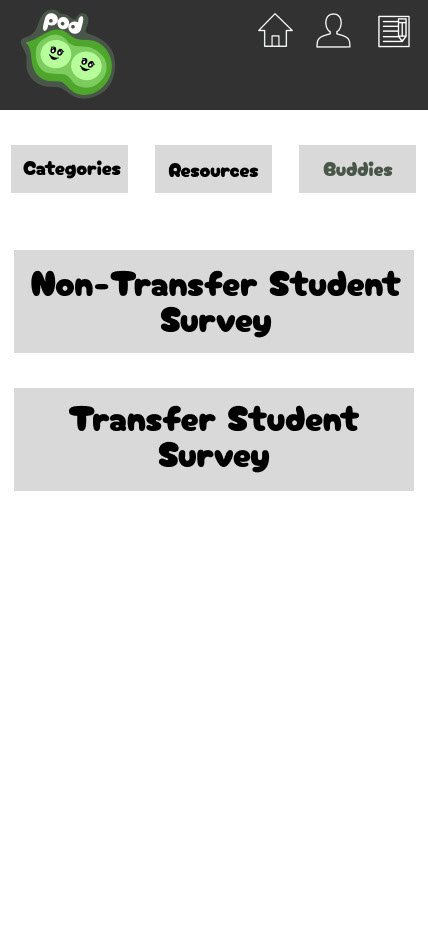
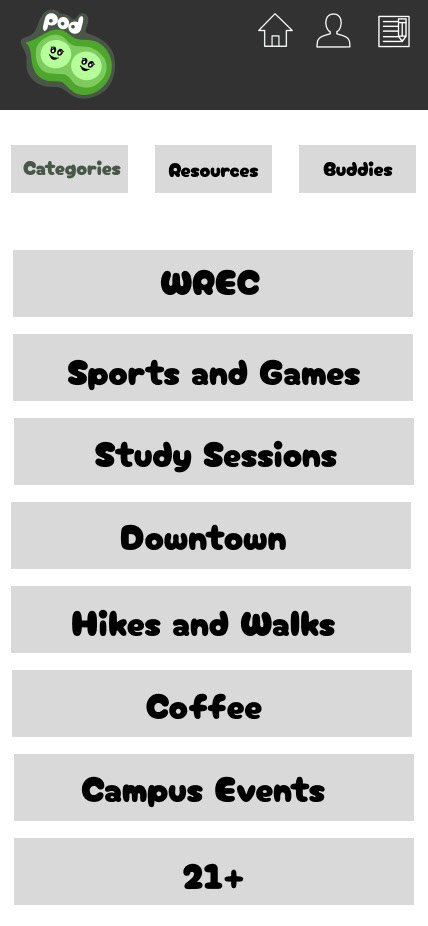
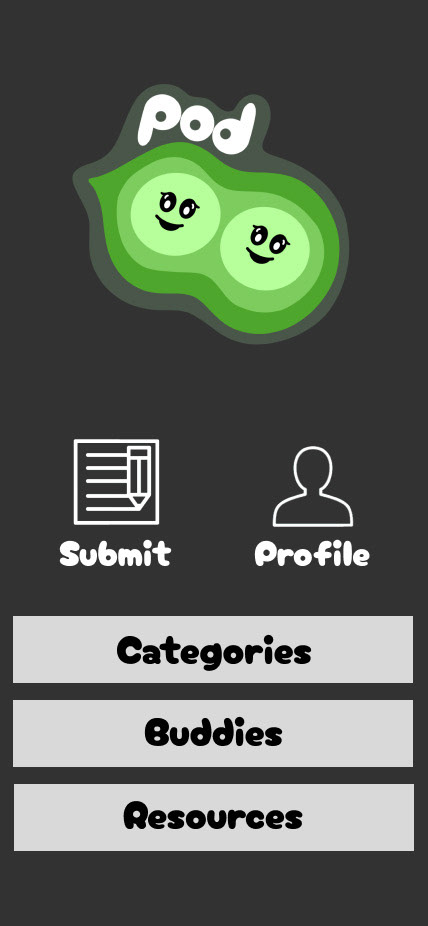
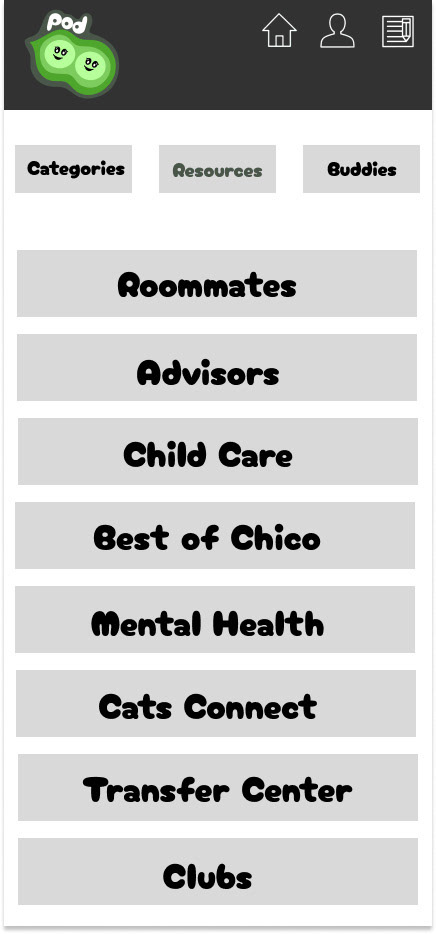
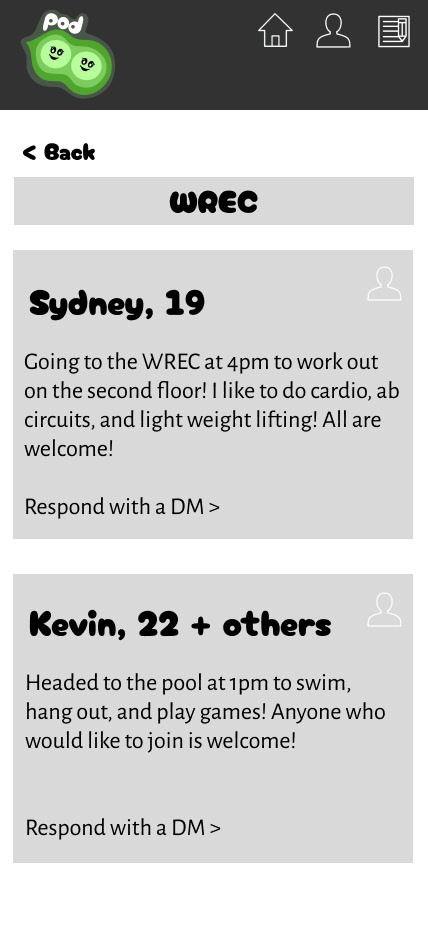
These are the detailed wireframes of our app, Pod, which we created for the project
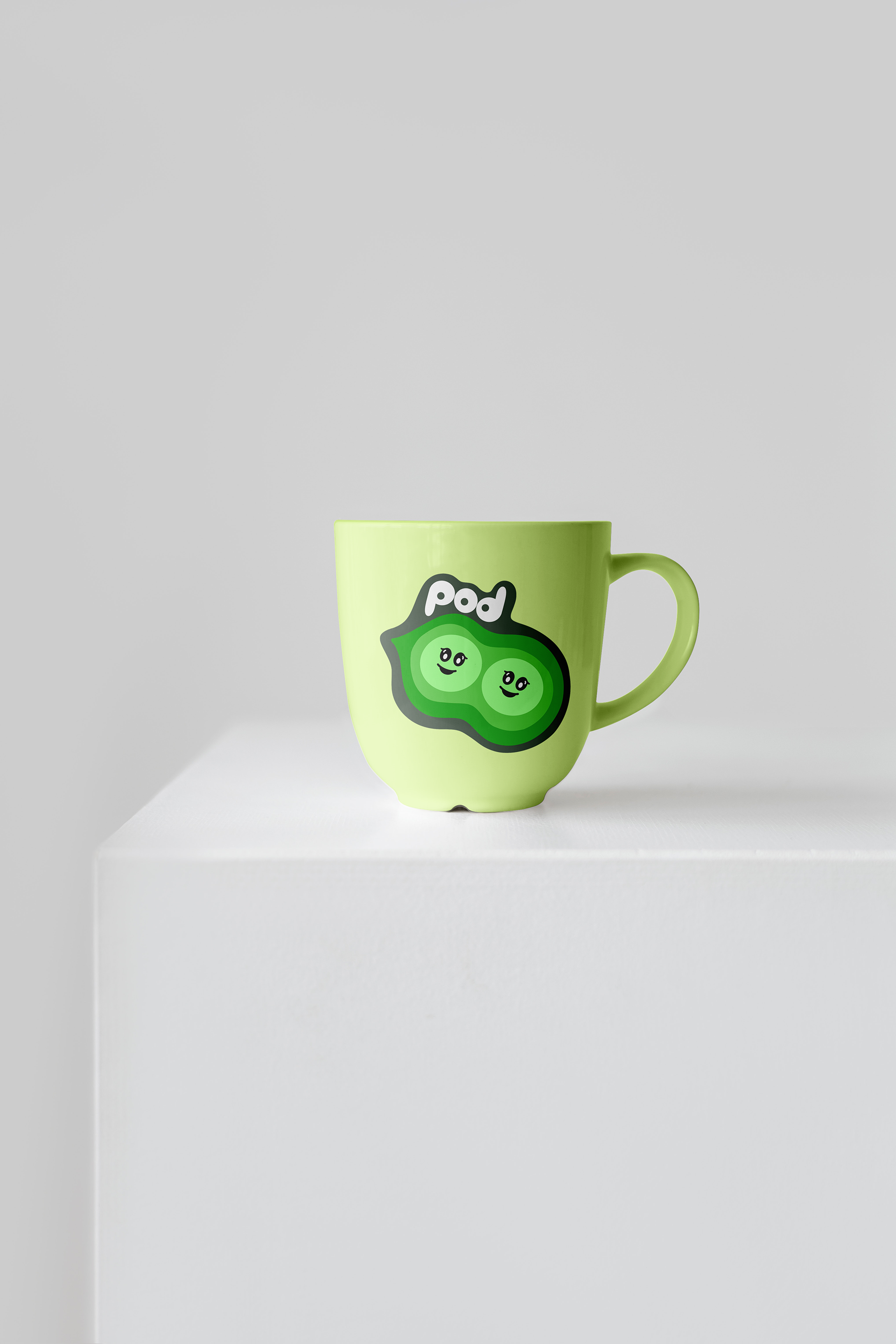
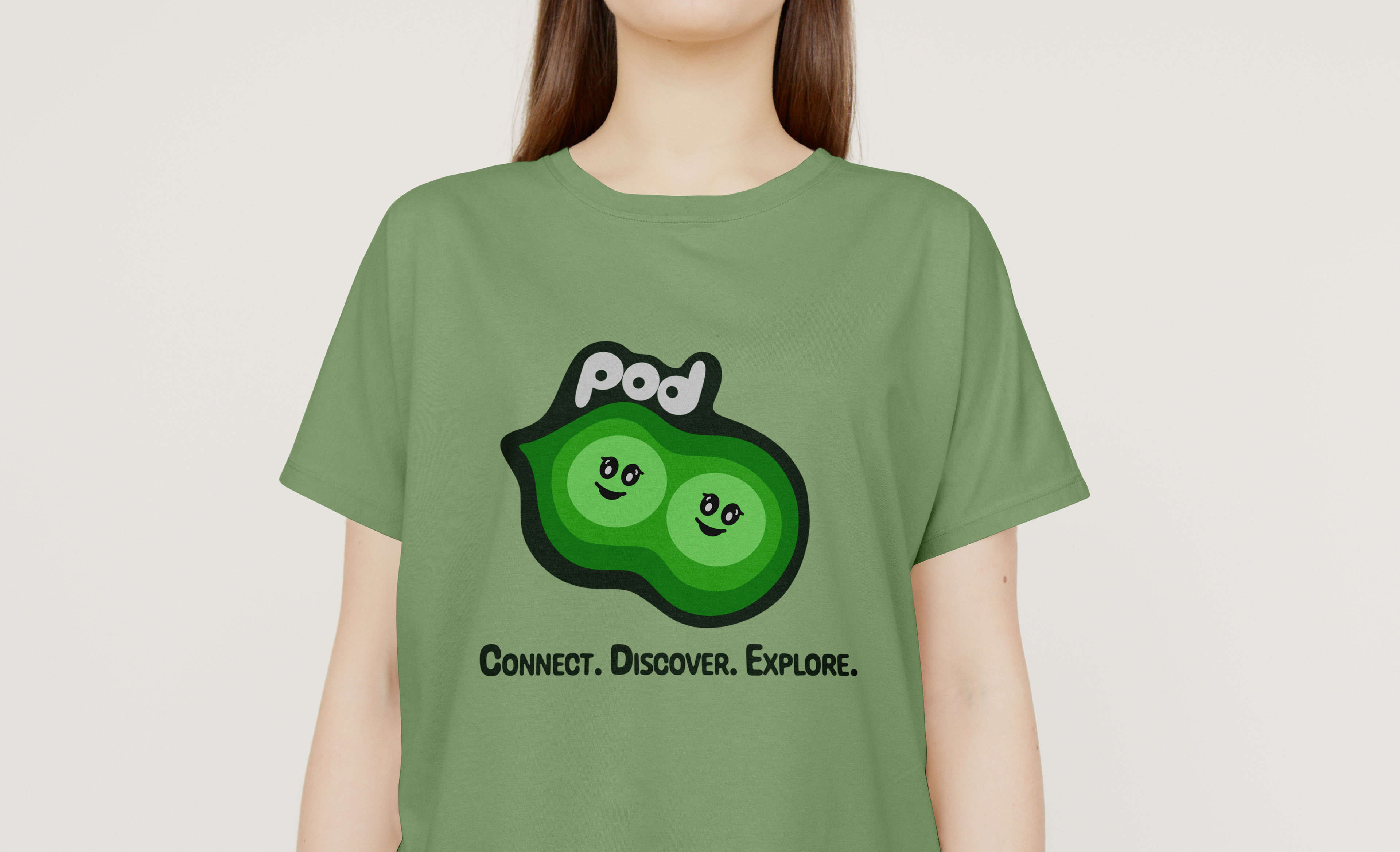
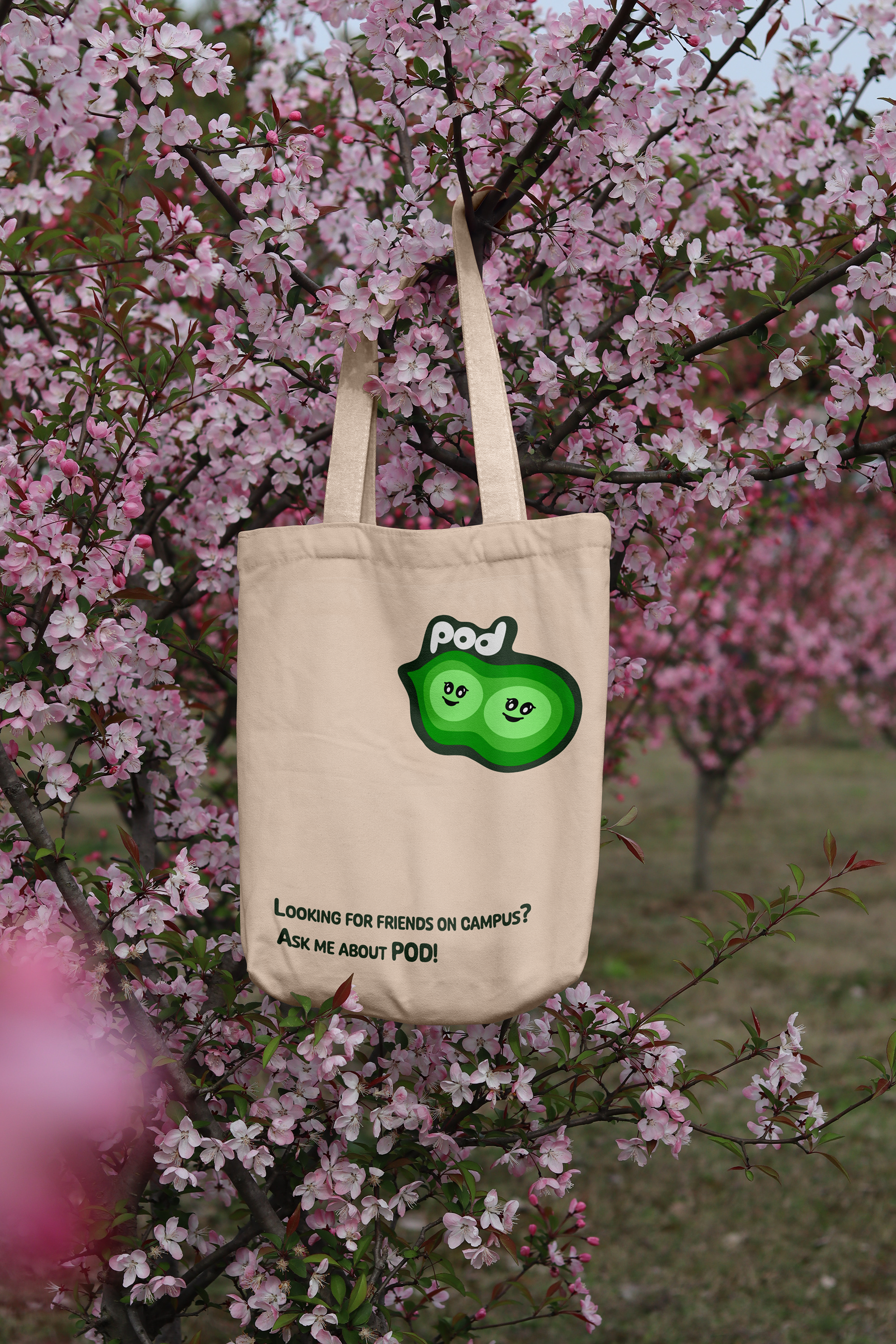
These are some prototypes that I created of products that would advertise Pod. They would be worn and used around campus to spread the word about the app.
Learnings: I discovered the hidden background components of services and how important upstream exploratory research is to setting the stage for a project. I particularly found personas, scenarios, and territory maps to be helpful. It was also interesting to see the transfer of student data and reflect on the causes of it. We had some beneficial guest speakers who shed light on the dilemma and helped me think of new and creative solutions for retention. Feedback also led us to develop the service more to address concerns. In the future, I’d try to incorporate user testing for the service, and I'd conduct more research in person.
